COVID in Context: Nevada one week after scrapping mask mandate
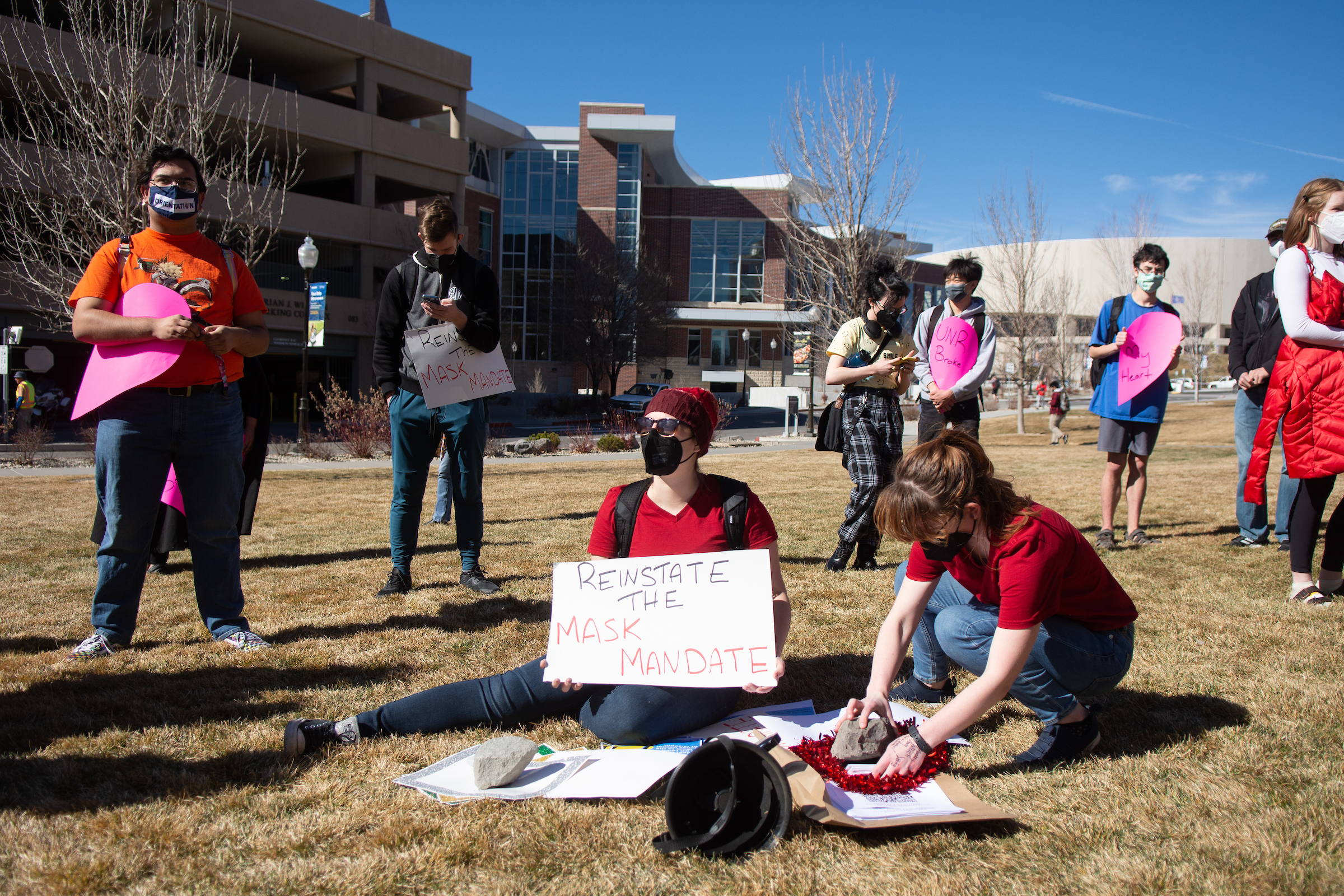
Welcome to COVID in Context, where staff at The Nevada Independent provide context and clarity on what’s happening with COVID-19 in Nevada.
We’ve added graphs showing wastewater sampling data in Northern and Southern Nevada to our COVID-19 dashboard along with graphs showing the genetic evolution of SARS-CoV-2 over time in Clark County and Washoe County.
COVID in Context will change depending on the situation at hand. If you have any questions, thoughts or suggestions, please reach out to [email protected], send me a direct message on Twitter, or submit them using this form.
For daily updates, check out our constantly updating data page and follow @nvindycovidbot on Twitter.
— Tabitha Mueller
Understanding the numbers
A week after Gov. Steve Sisolak ended Nevada’s mask mandate as the Omicron surge declined, the Centers for Disease Control and Prevention is reevaluating its public health guidelines for prevention strategies, including recommendations for when people should don face coverings.
“We are assessing the most important factors based on where we are in the pandemic,” CDC Director Rochelle Walensky told reporters Wednesday, “and will soon put guidance in place that is relevant and encourages prevention measures when they are most needed to protect public health and our hospitals.”
Walensky emphasized the importance of not just using case levels as a metric for prevention strategies. She said officials should also consider other factors such as hospital capacity and the severity of the virus outbreak.
“We want to give people a break from things like mask wearing when these metrics are better, and then have the ability to reach for them again should things worsen,” she said.
Along with the shifting guidance from the CDC, changes surrounding how hospitals report COVID-19 cases are expected from the federal government soon. Officials from the Nevada Hospital Association said the changes are designed to distinguish between patients hospitalized because of COVID-19 from patients with “incidental cases” — those who are hospitalized for a different chief complaint such as trauma or cardiac issues, who also happen to have COVID-19.
Walensky’s announcement and the expected shift in how hospitals report COVID-19 cases arrive in the wake of mixed and often polarized responses to Sisolak’s mask mandate repeal. Though some local businesses celebrated the ending of the indoor mask mandate with Instagram videos of employees throwing their masks into the air, others reiterated they would continue to require masks indoors, asking customers to be respectful of the decision.
Removal of the mask mandate leaves the decision to wear a mask to the grocery store, a hair appointment, the workplace or a meet-up with friends primarily to personal choice.
The policy changes point to a broader question: What new phase of the pandemic is Nevada entering?
In the week since Sisolak lifted the mask mandate, cases, hospitalizations and test positivity rates have continued to tick down. As of Thursday, 627 new cases were reported on average each day over the previous seven days, down from 1,313 last week and significantly lower than the highest point of the Omicron wave when the state was reporting an average of around 6,300 cases a day. Additionally, 741 people were hospitalized with confirmed or suspected cases of COVID-19, down from 1,044 last week. Test positivity has also dipped, hitting roughly 17.9 percent Thursday, the lowest positivity rate the state has seen since test positivity reached 35.6 percent in mid-January during the height of the Omicron wave.
The concentration of the virus in wastewater samples has also continued to decline in Northern and Southern Nevada. Still, as Walensky said during the COVID-19 press briefing Wednesday, the pandemic has not ended.
“I know that everyone is anxious to move beyond this pandemic and some of the ways we have had to change how we live over the last two years,” she said. “Moving from this pandemic will be a process led by science and epidemiologic trends, and one that relies on the powerful tools we already have, including vaccines, boosters, testing and treatment.”
Nevada’s test positivity rate remains above the World Health Organization’s recommended 5 percent threshold. The Nevada Hospital Association reported Wednesday that though COVID-19 hospitalizations continue to drop, the counts are higher than the previous Delta surge, and the state’s health care system is stretched thin.
The virus is here to stay, said Dr. Bayo Curry-Winchell, an urgent care physician who serves on the governor’s medical advisory team. She said people need to adjust how they respond depending on personal circumstances, comfort levels, case rates and other factors.
Nevada is entering a new stage of the pandemic where residents will have to ask themselves “how do we live with the virus?” Curry-Winchell said. Viruses naturally mutate, and it is only a matter of time before the next variant arrives.
The pandemic's trajectory remains unpredictable, Curry-Winchell added, noting that lifting the mask mandate signifies a move away from government-imposed regulations and toward personal responsibility as far as mask-wearing and other preventative measures.
Against the decreasing backdrop of case numbers and hospitalizations, immunization rates remain lower than ideal for reaching population-wide protection from COVID-19, and the pace of vaccine distribution in Nevada is beginning to slow compared to earlier this winter. Experts estimate roughly 80-90 percent of the population needs to be completely vaccinated or have immunity from repeated prior infections. But as of Thursday, only 73.7 percent of Nevadans have been either partially or fully vaccinated against COVID-19, with 32.5 percent fully vaccinated but with no booster and 21.73 percent fully vaccinated with a booster.
The gap between the ideal vaccination rate for reaching herd immunity and the current vaccination rate could be challenging to overcome considering recent OH Predictive Insights/The Nevada Independent polling that indicates more than a fifth of Nevadans will not get the vaccine.
As officials reassess COVID-19 mitigation methods, Curry-Winchell worries about people of color who have historically suffered from health care inequities and disparities. She hopes officials invest in health literacy and conduct outreach to underserved communities.
For those seeking guidance on navigating the coming months, Curry-Winchell recommends using case rates and hospitalizations as a compass to make the best decision about when to wear masks.
“Everyone has a different relationship with how they have approached COVID-19. And so I think understanding that, and then making that outline to best serve yourself and your family, is important now more than ever,” she said.
— Tabitha Mueller
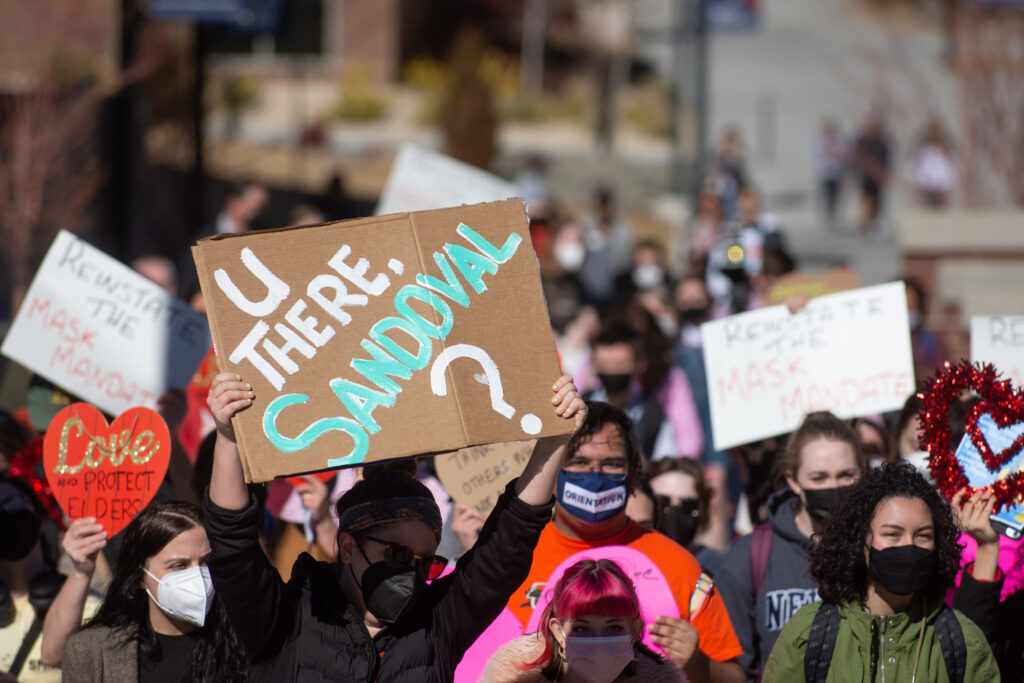
At UNR, some students, faculty push back on the removal of mask requirements
Perhaps nowhere has the decision to remove the mask mandate faced as much visible pushback as it has at UNR.
In the wake of the governor’s announcement, Nevada System of Higher Education Chancellor Melody Rose announced that not only was the system’s own mask mandate lifted effective immediately, but that individual institutions were also expressly prohibited from crafting their own mask guidelines.
Shortly thereafter, more than 2,100 students and faculty — of which at least half are from UNR — signed an online petition demanding the reinstatement of the mandate. And on Monday, more than 60 graduate workers, students and faculty walked out of class and marched across campus to protest the decision, bearing signs that read “reinstate the mandate” and “U there [UNR President Brian] Sandoval?”
Junior public health student Camila Cardillo, who participated in the walkout, criticized UNR administrators for a “back and forth” stance on COVID mitigation policy.
“They were handing out [N95] masks 10 days ago, a week ago, telling everybody that you need a stronger mask, you need something that will protect yourself and will protect others,” Cardillo said during an interview Monday. “And then it seems literally in the span of a few hours, all of that went out the window.”
Still, one week after the mandate was lifted, tensions over mask requirements appear to remain high. In letters and press releases issued this week, both the Nevada Faculty Alliance and Sandoval reported and condemned the alleged targeting and harassment of those still wearing masks on campus.
“If we are to be the institution that we believe we are – one that values inclusivity, respect and civility – we cannot allow this to happen,” Sandoval wrote in a letter to campus on Wednesday.
At least some students have defended the mandate removal.
“A lot of students opposed the mask mandate in the first place, just seeing it as an intrusion on our right to choose,” Jace McNaught, a student representative for the College of Business at UNR, told regents on Thursday. “But there’s nothing stopping people from still wearing masks.”
Even so, regents could revisit the issue of masks or other COVID mitigation measures in the coming weeks. At an unrelated meeting on Thursday, two regents proposed bringing the matter up for future consideration.
Some institutional presidents have signaled they may yet entertain a shift in the system’s COVID policy, should NSHE leaders reopen discussions.
In an interview Thursday, Nevada State College President DeRionne Pollard said she would like to see COVID response policies linked to local or regional metrics, rather than a blanket approach.
“So perhaps what is affecting the South is very different than what we may see happening in the North as a result of that,” Pollard said. “We need to have a systematic way of reviewing what is the case exposure, what are the numbers so that we can be able to say as a system, we're going to have to divide our responses.”
However, Pollard later clarified in a direct message that: “NSHE aligned [its] COVID decisions with the Governor’s directives, and to abandon that now is not sound practice.”
— Jacob Solis and David Calvert
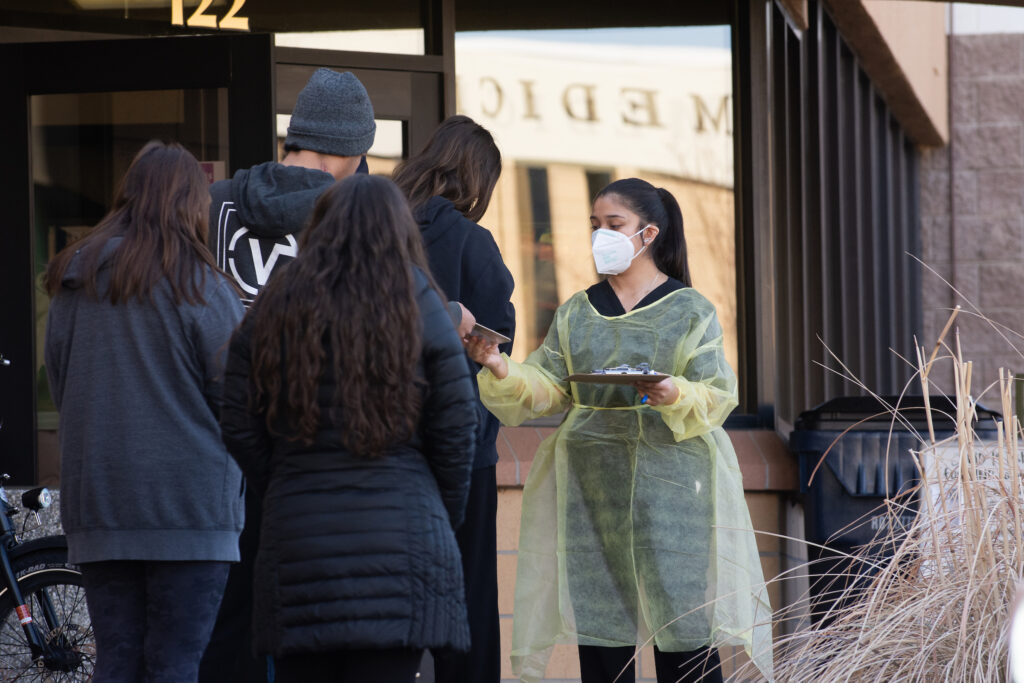
Despite declining COVID spread in Washoe and Clark counties, transmission still high
Gov. Steve Sisolak last week rescinded a mask mandate amid falling COVID cases, but as Dick pointed out during a news conference, the metrics aren’t all rosy. Washoe County’s test positivity rate over the past week was at 27 percent, while the rate of new cases per 100,000 people over the last seven days was 310.
Two metrics used to monitor COVID-19 prevalence in Washoe County are three times higher than the Center for Disease Control and Prevention’s threshold for high transmission, the county’s chief health officer, Kevin Dick, said Wednesday.
“We’ve come a long way since we reported more than 1,700 cases on Jan. 20,” Dick said.
Washoe County’s seven-day moving average of new cases per day is at 147, down from more than 300 in the prior week's briefing and 1,165 at its peak. Though the numbers are declining, he said the county is still at a high community transmission rate and the county should continue to aim to level down to “substantial” transmission status.
Dr. Fermin Leguen, chief health officer at the Southern Nevada Health District, noted in a separate call Wednesday that the level of transmission in Clark County is also considered high.
Dr. Cassius Lockett, director of disease surveillance and control with SNHD, said the seven-day average for cases on Jan. 30 was 1,366 in Clark County. Lockett said the county is averaging about 330 new cases a day and the number needs to fall below 164 cases a day for the case rate to be in the “moderate” transmission category.
The mask mandate has been lifted since last week, but Leguen emphasized that masks are still required for hospitals and in the transportation sector, such as on buses and in airplanes. Clark County Commissioner Marilyn Kirkpatrick added that many people are still choosing to wear masks based on their best interest and comfort level.
While Dick said he hopes the numbers will continue to decline in spring as more people congregate outside and are better dispersed, he acknowledged it remains largely unpredictable.
“I’ve learned that it’s very, very hard to predict what’s going to happen with COVID-19,” Dick said.
— Da Yeon Eom
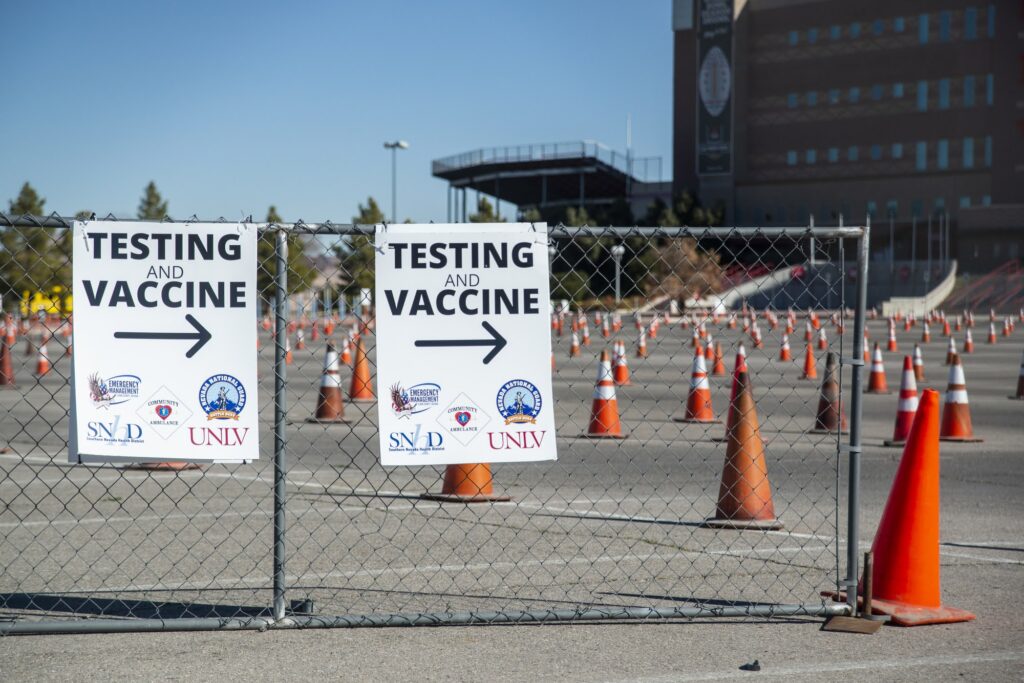
News you can use
Proof of vaccination
If you got your vaccine in Nevada, you can now access and download your COVID-19 vaccination records through the state’s immunization information system here.
If you receive an error message as you try to sign into the system, call 1-800-401-0946 or email [email protected].
Searching for COVID-19 testing sites?
The Nevada Hospital Association continues to report a staffing crisis in hospitals across the state, and noted “the hospital sector continues to experience barriers to functioning at its full capability, including staffing challenges and the ability to transfer patients to lower-level, more appropriate levels of care.”
The association emphasized that individuals should get tested at testing sites, not hospital emergency departments.
To find a testing site in Nevada, including pharmacies, head on over to the state’s COVID-19 test site finder.
Rapid Tests
Here's the link to order free at-home COVID-19 tests through the United States Postal Service.
Residential households can order one set of four free at-home tests. There's a limit of one order per address and orders began shipping for free in January.
The state received 600,000 test kits from the federal government. To find the kits, follow this link to the state’s website.
As part of a federal effort, private insurance companies will cover at-home test kits purchased at pharmacies. Companies will cover up to 8 kits per month, depending on the number of people on a health plan.
Here’s a guide for getting your over-the-counter COVID-19 test reimbursed.
Trying to buy an effective mask?
Since the arrival of the Omicron variant, health experts have urged Americans to upgrade their cloth masks to an N95 or KN95 because the new variant is so transmissible. These higher grades tend to be costly and difficult to find.
This guide to masks from NPR has everything you need, including where to find N95 masks, best practices for reusing a mask and how to spot a fake mask.
Quarantine and isolation guidelines
If you are exposed, and you don't have a positive test, the CDC is asking you to monitor your symptoms, wear a mask, and then get tested if you're symptomatic. If you are sick or test positive, the CDC recommends you stay home for five days and isolate yourself from others. You can end isolation after five full days if you are fever-free for 24 hours without medication. Once out of isolation, wear a well-fitting mask for 10 full days when around other people.
For complete guidelines and recommendations head over to the CDC’s COVID-19 Quarantine and Isolation page.
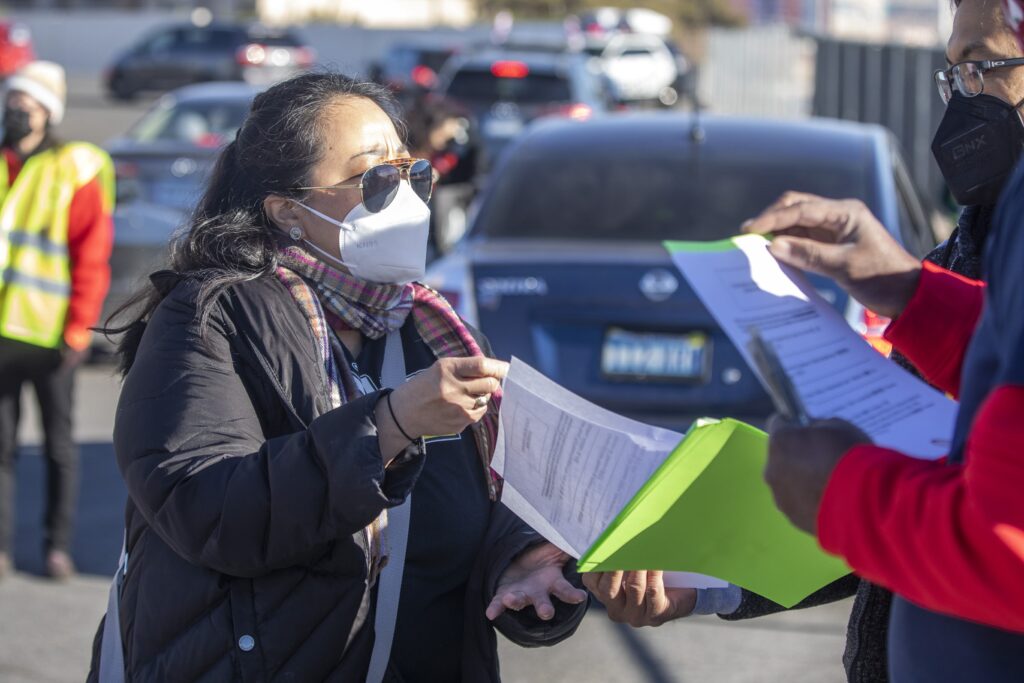
What we’re reading
Not all health news is about COVID. Scientists say a third person has been cured of HIV through a transplant method involving umbilical cord blood, according to The New York Times.
Wondering why it’s difficult to process new information about COVID-19? The Atlantic’s Charlie Warzel has a fascinating explanation in his latest newsletter.
This study from the CDC indicates that babies born to mothers who were vaccinated against COVID-19 were less likely to be hospitalized with the disease. Time breaks it down even further.
Learn why the Consumer Price Index is increasing, and how it’s connected to COVID-19 in this analysis from Forbes.
Brian Labus, a UNLV epidemiologist who is also a member of Sisolak’s health advisory team, told Las Vegas’ FOX5 that the governor’s decision to remove the mask mandate was largely driven by the reality that residents were no longer following it.
There’s been an immunity spike followingthe Omicron surge, but it is anyone’s guess as to whether it will help the United States reach herd immunity, the Associated Press reports.
COVID-19 patients may have an increased risk of developing mental health problems, via The New York Times.
Update: 2/21/22 - A previous version of this article misidentified UNR business student and student representative Jace McNaught as Jason.



